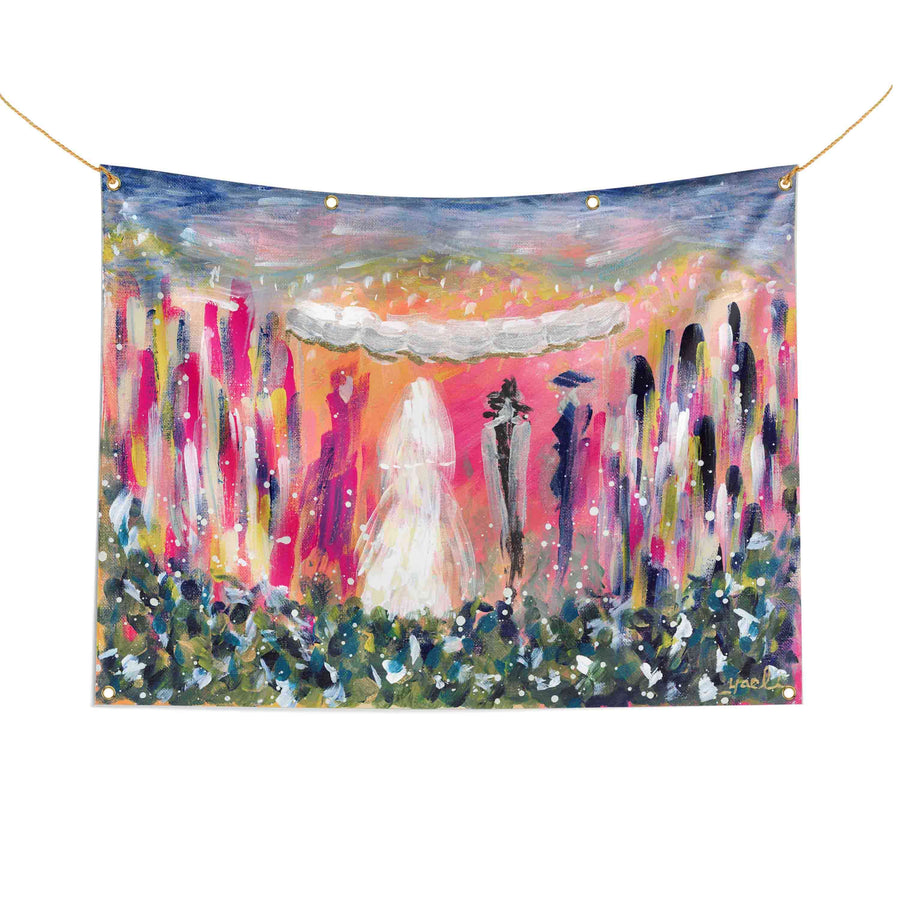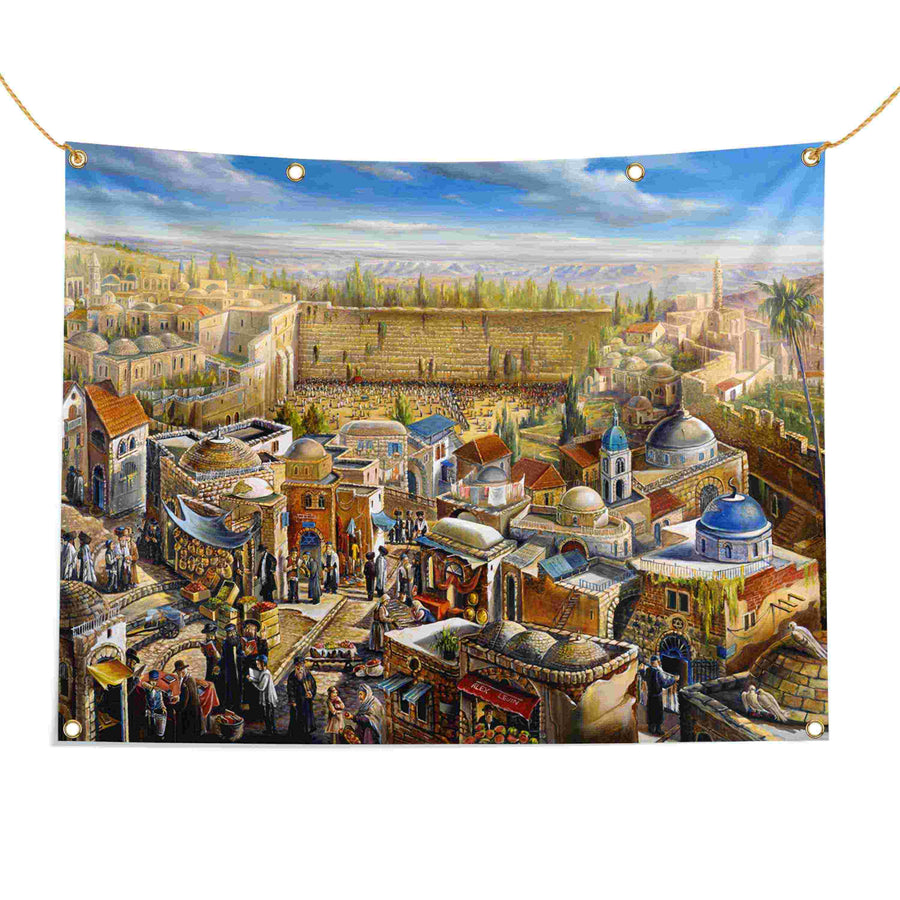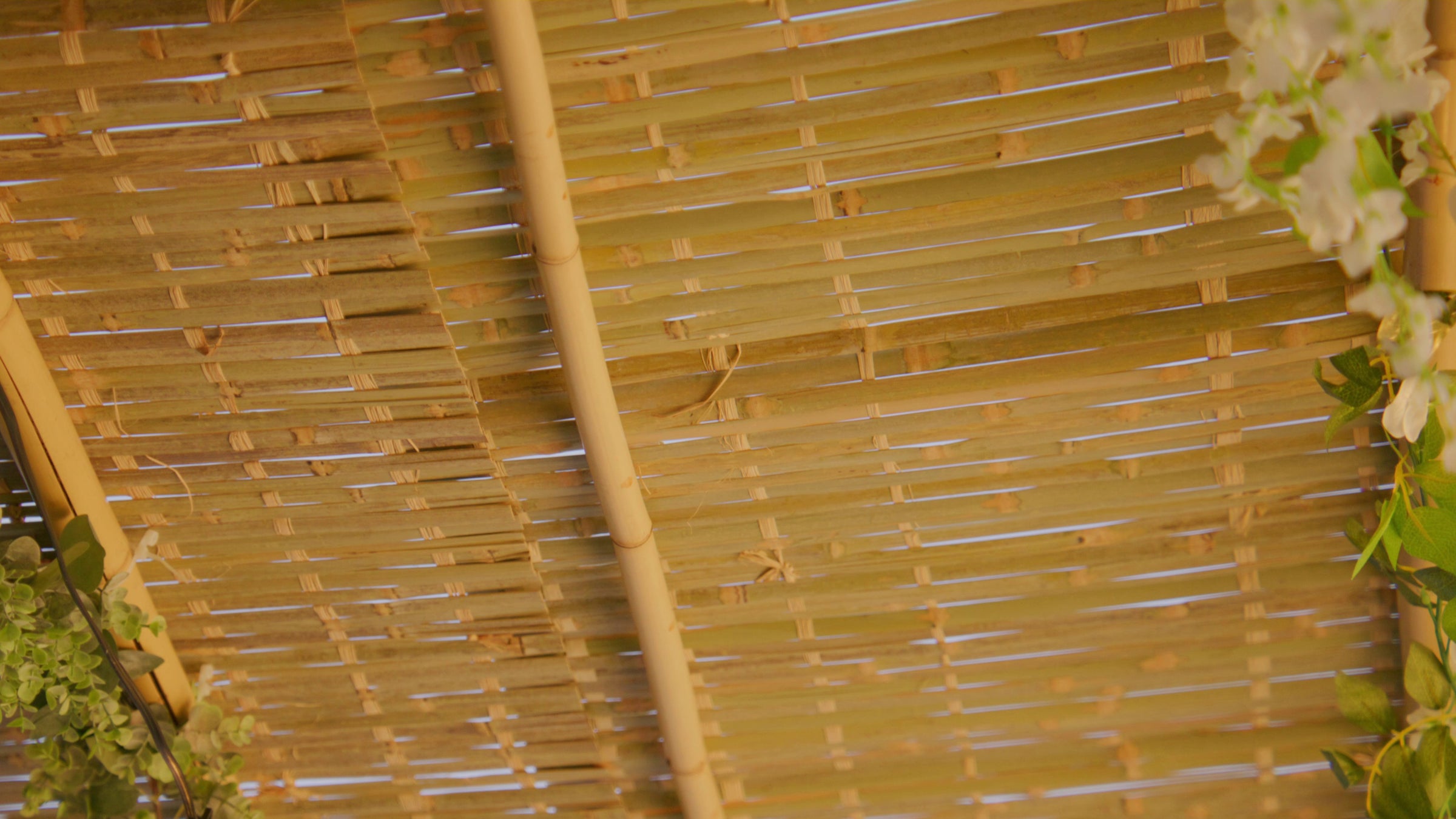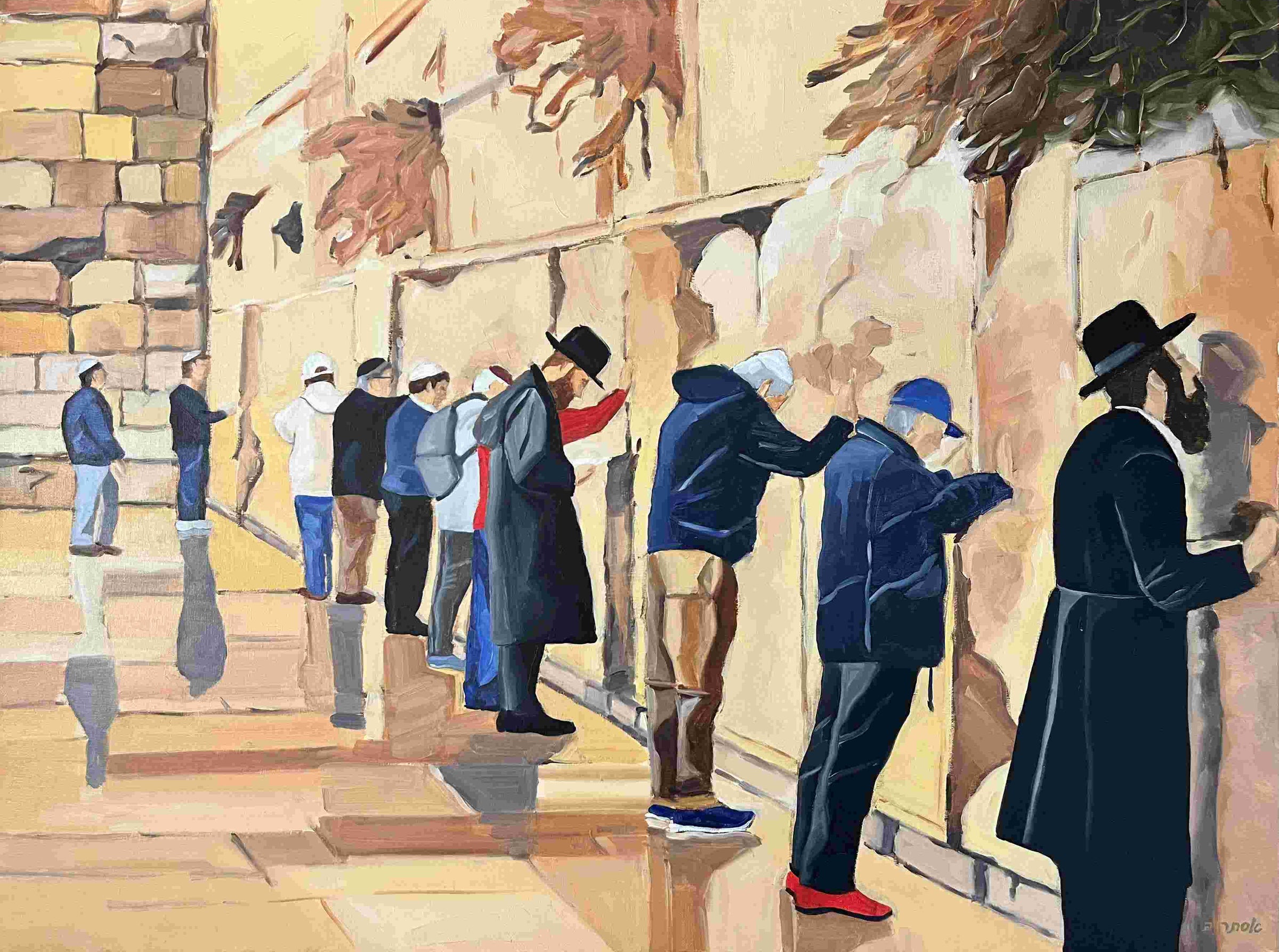

What You Need to Know About The Lulav and Etrog (Four Kinds)
Before we jump into our essential wisdom, you might be wondering, “what is a lulav and etrog?,” “what are the lulav parts?,” and “exactly which four out of the billions of species on this planet are we talking about?”
‘The four kinds’ or ‘the four species’ are also called the arbah minim. This quartet is made up of: A palm branch (lulav), two willows (aravot), at least three myrtles (hadassim), and a citron (etrog). The first three are typically bundled together by your friendly neighborhood arba minim expert, whilst the etrog is kept separately.
Word to the wise – not all arba minim sets on the market are kosher, so instead of going to the black market to find some, we suggest consulting with your local Rabbi before purchasing.
They Are ‘Taken’ (Almost) Every Day of Sukkot
“Taking” the lulav and etrog means to take the four plant species specified in the Torah and hold them together in your hands, every day of Sukkot (except Shabbat).
Like putting kugel on your cholent, taking the arbah minim is obligatory for men, whilst for women, it’s an optional mitzvah.
…and the best place to perform this mitzvah? Why, in the Sukkah , of course!
Deep Dive: Essential Lulav And Etrog Facts
Three Out Of The Four Species Are Bound Together
“Bless This Bundle”
There are a number of lulav and etrog blessings that are said, when ‘taking’ the four species together.
First, one lifts the lulav bundle upright, with the right hand, and recites:
“Blessed are You, L-rd our G‑d, King of the universe, Who has sanctified us with His commandments and instructed us to take the lulav.” The etrog is then lifted in the left hand and brought together so that it touches the bundle.
The first time this mitzvah is done each year, the blessing of Shehecheyanu is added:
“Blessed are You, L-rd our G‑d, King of the universe, Who has given us life, sustained us, and enabled us to reach this occasion.”
How do you shake the lulav?
After holding the four kinds together, they are gently shaken. Some have the custom to wave them in six directions, three times each: South, North, East, up, down, and West (keeping the species upright).
Put up a beautiful tapestry of the lulav & etrog in your Sukkah to remind you to shake them daily!
How Are They Used During Prayers?
The Best Place Is the Great Outdoors…In Your Sukkah
The mitzvah of ‘taking’ the four species may be done anywhere. At home, on the street, at your local Costco, Osher Ad, in the synagogue or at work – you name it, someone’s probably done it there! The best option, though, is to do it inside your Sukkah .
But it gets even better: Use the opportunity to grab a bite to eat as well, and cash in on the holiday’s other primary mitzvah – eating in the Sukkah (shaking the lulav and etrog is tiring work, after all).
…and in case you needed some, here are even more ideas of what to do in the Sukkah.
If you do not have a Sukkah of your own, fear not. Let your neighbors collect another mitzvah by visiting theirs, or visit one at your local synagogue.
Precious Cargo, Handle With Care
To make sure that your lulav and etrog set meets the required standards of Kashrut, it’s important to buy them from a trusted vendor , verified with your Rabbi.
It’s also crucial to handle your set with some TLC, so no banging the lulav (that also means no using it for sword fights by the children!), keep the etrog's pitam (a small protrusion extending from the tip) intact, and swap out any wilted aravot, or ones with lost leaves.
No Pitam? No Problem
After that entire paragraph highlighting the need to make sure the pitam stays in-tact, here’s the kicker: A pitam is not always necessary.
The etrog typically bears a pitam, which is its most delicate feature. Its detachment renders the etrog non-kosher if enough of the pitam is removed, so that it gets down to the surface of the fruit. However, many etrogs are harvested with the pitam having naturally fallen off while still attached to the tree, and these etrogs remain kosher despite lacking the iconic knob.
Purebred Etrogs
The majority of etrogs hail from Italy and Israel, where their kosher status hinges on being purebred, free from cross-grafting with other fruits like lemons (a practice more common than you’d think!). Identifying purebreds amidst hybrid imposters is tricky, so they're exclusively harvested from unaltered orchards.
Calabria in Italy stands out, boasting a legacy of unblemished lineage favored by many. Legend has it that Moses himself sought an etrog from Calabria upon learning of the four species. However, other sought-after etrog varieties, like those from Morocco or Yemen, thrive in Israeli orchards, presenting diverse options for enthusiasts.
Some Add Dozens of Myrtles (Hadassim)
Each set of the four species must feature one lulav, one etrog, and two aravot. The number of hadassim, however, is not set in stone. Although a minimum of three is required, no maximum amount is given.
Some follow the custom of enhancing their set with at least 6 (the Chabad custom), 18 (the numeric value of the word ‘chai’ or ‘life’, 26 (the numeric value of G-d’s name, Hashem), and even 36 (the numeric value of twice ‘chai’) branches.
The Four Jews Of The Lulav And Etrog
The Talmud tells us that the four species are split into two types. The fruit-bearers (the lulav and etrog) and the non-fruit bearers (the hadassim and aravot). But what do the lulav and etrog represent?
The Midrash tells us, that these four species mirror four types of Jews:
- The etrog both bears fruit and has a pleasant smell. The etrog people are therefore the can-do, go-getters, who are both pleasant to be around (their aroma), thanks to their good deeds and are high achievers in their Torah study (their fruit).
- The lulav bears fruit, but has no aroma. This symbolizes the high-achieving person – one who ‘bears fruits’ – but is unpleasant to be around (lacks aroma).
- The hadassim bear no fruit, but have a pleasant aroma. These are the people who don’t contribute much to the world in ways of achievements, but rather are people with a “pleasant aroma.” They’re happy, good-natured, and a pleasure to be around.
- The aravot bear neither fruits nor have an aroma. This is the type of person who both doesn’t create anything and has an unpleasant character to go with it. Regardless of this, they still make the bundle.
A large element of Sukkot is unity. Holding all four types together underlines the importance of Jewish unity, highlighting that at our core, we are all one.
But what about the hadassim? Unlike the others, why is there no limit to how many one can add?
To create unity, the most important thing for a person to have is a ‘pleasant aroma.’ People aren’t looking to be around achievements, they’re looking to be around someone with a pleasant aroma – a mentch, a gentleman, and a respectable human being.
Unlike the other three personality types, pleasant souls are the universal favorites In every setting – synagogues, Shabbat meals, weddings. They're embraced wherever they go.
Communities thrive on hadassim, which is why you can never have too many!
Chag Sameach!










